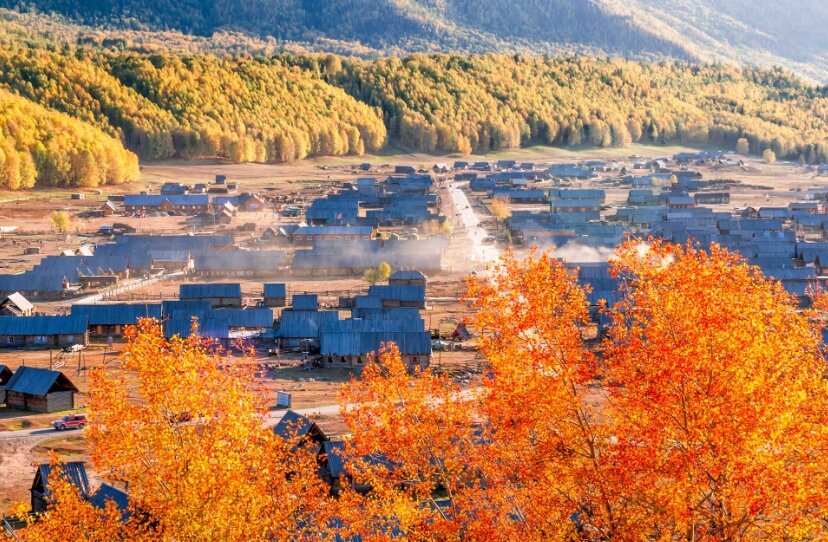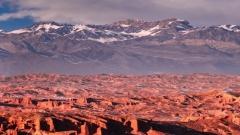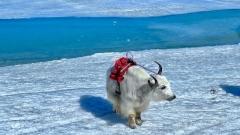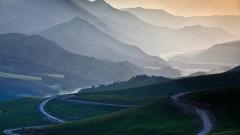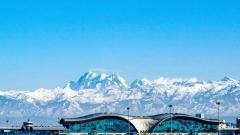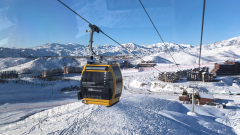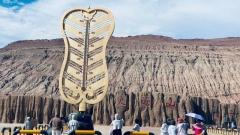In recent years, China has relaxed rules so that foreign tourists can apply for a Border Permit and explore much of the region without joining a fixed tour group. Yet some sensitive areas remain off-limits without special authorization. Can foreign visitors to Xinjiang truly travel freely? The answer is yes, but there are prerequisites and restrictions that need to be understood.
How Foreign Tourists Can Go Independent in Xinjiang
Although Xinjiang once required all non-Mainland Chinese visitors to join an approved group tour, pilot programs since 2013 now allow many passport-holders to travel independently—provided they secure a Xinjiang Border Permit in advance. Key points:
- Border Permit Application
Some border or sensitive areas may require additional border permits or have other travel restrictions, necessitating tour groups or chartered vehicles. Foreign tourists must apply through either local Public Security Bureaus in China or via a trusted travel agency. You’ll submit your passport, valid Chinese visa, flight/train bookings and a proposed itinerary. Processing generally takes 7–10 working days. - Restricted Zones
Some border-adjacent areas—such as the high Pamir Plateau near the Kyrgyzstan border, parts of the Karakoram Highway corridor, and sections of the Tian Shan mountains—remain off-limits without special military security clearance. If your self-planned route skirts one of these sectors, China Dragon Travel can help secure the extra approvals. - No More Mandatory Group Tours
Once you hold a Border Permit, you are free to enter eligible Xinjiang sites without being forced into a fixed-itinerary group. However, note that popular attractions may still require advance e-ticketing or timed-entry reservations (e.g., Kanas, Heaven’s Lake).
In brief, foreign visitors can explore Xinjiang on their own, as long as they plan permit applications, double-check restricted-area maps, and book key tickets ahead of time.
Choosing Your Xinjiang Travel Style: Guided, Semi-Guided or Independent
After securing your Border Permit, deciding how to get around is the next big choice. Each approach has its own balance of convenience, flexibility and cost:
Fully Guided Group Tours: Hassle-Free but Less Flexible
What to Expect
- Pre-set routes covering major highlights (Urumqi, Tianshan Heavenly Lake, Turpan, Kashgar).
- Group transport, hotels, entrance fees and some meals included.
- Professional guide handles logistics, commentary and on-the-spot changes.
Pros
- Zero planning on your end—ideal for first-time visitors or those short on time.
- Local insights from a certified guide who speaks your language.
- Group discounts on hotels, transfers and attractions.
Cons
- Fixed schedule means less time at your favorite spots.
- Risk of “shopping-stop” tours where you’re taken to state-run bazaars or souvenir factories.
- Limited opportunity to veer off the beaten path.
Fully guided tours suit travelers who want a stress-free snapshot of Xinjiang’s best and aren’t too concerned about spontaneous detours.
Semi-Guided (Private Car & Driver): Flexibility with Support
What to Expect
- Exclusive vehicle and experienced local driver at your disposal.
- You choose daily routes, pacing and hotel level.
- Option to add a private guide or simply use driver as route expert.
Pros
- Freedom to linger longer in villages, scenic overlooks or roadside stalls.
- Vehicle and driver handle all road-related stress—no need to navigate or worry about breakdowns.
- Adjust plans in real time based on weather, road conditions or personal preference.
Cons
- Higher per-day cost than group tours due to bespoke service.
- Need to coordinate lodging and meals yourself.
- Quality varies—always verify licence and insurance.
Pro Tip: Book through China Dragon Travel, which partners exclusively with licensed local operators. We vet each driver’s credentials, ensure up-to-date vehicle maintenance and include 24/7 hotline support. That way, you enjoy independent spirit without unnecessary risk.
Fully Independent (Self-Drive or Rental): Ultimate Autonomy, Highest Risk
What to Expect
- You handle vehicle rental (with high-altitude insurance and snow-tire options), route-finding and all logistics.
- True “road-trip” feeling—stop whenever you spot a wild poppy field or ancient petroglyph.
Pros
- Total freedom over your schedule, side trips and meal stops.
- Discover off-map hamlets, seasonal fruit stands or secluded valley lodges.
- Best for seasoned travelers familiar with long-distance desert/highland driving.
Cons
- Difficulty navigating remote areas if you’re unfamiliar with local conditions or at high altitude.
- Unexpected closures (landslides, military drills) may leave you stranded.
- Emergency support is slower—mobile reception can disappear in mountain passes.
Generally only recommended if you or someone in your party has deep Xinjiang experience, speaks local dialects or has tackled similar self-drive trips in China before.
Essential Permits, Insurance & Safety Preparations When Travelling in Xinjiang
Border Permit
- Timing: Apply at least two weeks before departure.
- Method: Submit paperwork via Chinese visa agent or local travel agency in your departure city.
- Validity: Generally valid for 30 days and covers most non-restricted Xinjiang prefectures.
Travel Insurance
- Coverage: Look for high-altitude medical coverage, emergency evacuation and trip-cancellation protection.
- Add-ons: Off-roading coverage if you’ll tackle unpaved tracks in Karakul or the Altay region.
Emergency Planning
- Digital & Paper Copies: Carry scans of your passport, Chinese visa and border permit in a secure cloud folder plus paper copies in a waterproof bag.
- Local Apps: Install the “Xinjiang Public Security” app (for checkpoint info) and ride-hailing apps for intercity transfers.
- Contact List: Share driver details and daily itinerary with a friend or family member outside China.
High-Altitude Precautions
- Acclimatization: Spend at least 24 hours in Urumqi (870 m) or Turpan (−154 m) before ascending to places like Kanas (1,300 m) or the Pamirs (over 3,000 m).
- Hydration & Rest: Drink plenty of water, avoid strenuous hikes on your first day at altitude and carry basic altitude-sickness meds.
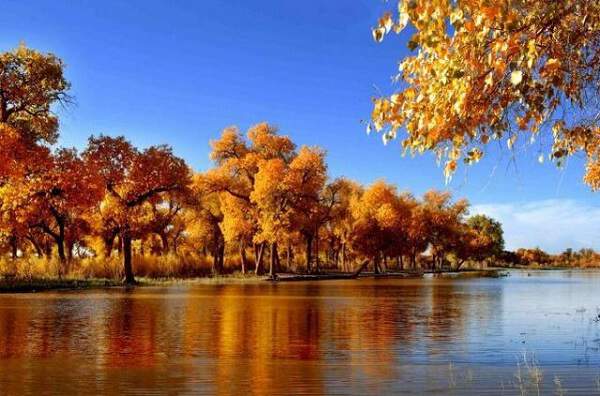
Tarim Populus Euphratica Forest
Crafting the Perfect Xinjiang Travel Route by Trip Duration
Your total days in Xinjiang will determine how much ground you can cover without feeling rushed:
Short Trip: 3–5 Days
- Base in Urumqi: Explore Xinjiang Regional Museum, Red Mountain (Hong Shan) and night markets.
- Day Trip to Heavenly Lake: Scenic alpine lake with easy hiking trails.
- Turpan Excursion: Karez underground irrigation system, Fire Mountain (Huo Shan) and Jiaohe Ancient City.
Medium Trip: 7–9 Days
- Classic Northern Loop: Urumqi → Heavenly Lake → Bogda Peak → Kanas → Hemu Village → Jiadengyu → return via Kuitun and Bayinbuluke Grassland.
Extended Trip: 10–14 Days
- Full North & South: Add Turpan → Korla → Kuqa → Tianshan Grand Canyon → Tashkurgan → Kashgar → back to Urumqi by air or long-haul train.
Deep Dive: 15+ Days
- Off-the-Beaten-Path: Venture into the Pamir Plateau, Marble Desert in Ruoqiang, or winter ski resorts in Altay during off-peak season.
For each itinerary length, China Dragon Travel offers bespoke route design, combining must-see attractions with hidden gems, tailored to your pace and budget.

Kashgar Old City
Best Time to Go Xinjiang: Summer vs. Autumn
Summer (June–August)
- Climate: Warm days (20–30 °C), cool nights; strong UV index.
- Highlights:
- Ili Valley: Lavender fields near Yili, seasonal fruit orchards.
- Grasslands: Barkol and Jinghe for horse-riding and yurt stays.
- Canyons & Lakes: Zhaosu, Kanas, Bayanbulak for vast green panoramas.
Autumn (September–October)
- Climate: Crisp, clear air; daytime 10–20 °C, nighttime 0–10 °C.
- Highlights:
- Kanas & Hemu: Forests ablaze in gold and crimson.
- Karamay & Altay: Autumn wildflowers and early snowfall contrast against grasslands.
- Fruit Harvest: Grapes, apples and pomegranates in Turpan and Korla.
Ultimately, your choice depends on whether you prefer endless summer meadows or the “golden hour” of Xinjiang’s epic autumn foliage. Either way, China Dragon Travel will provide up-to-date weather guidance and seasonal activity recommendations.



